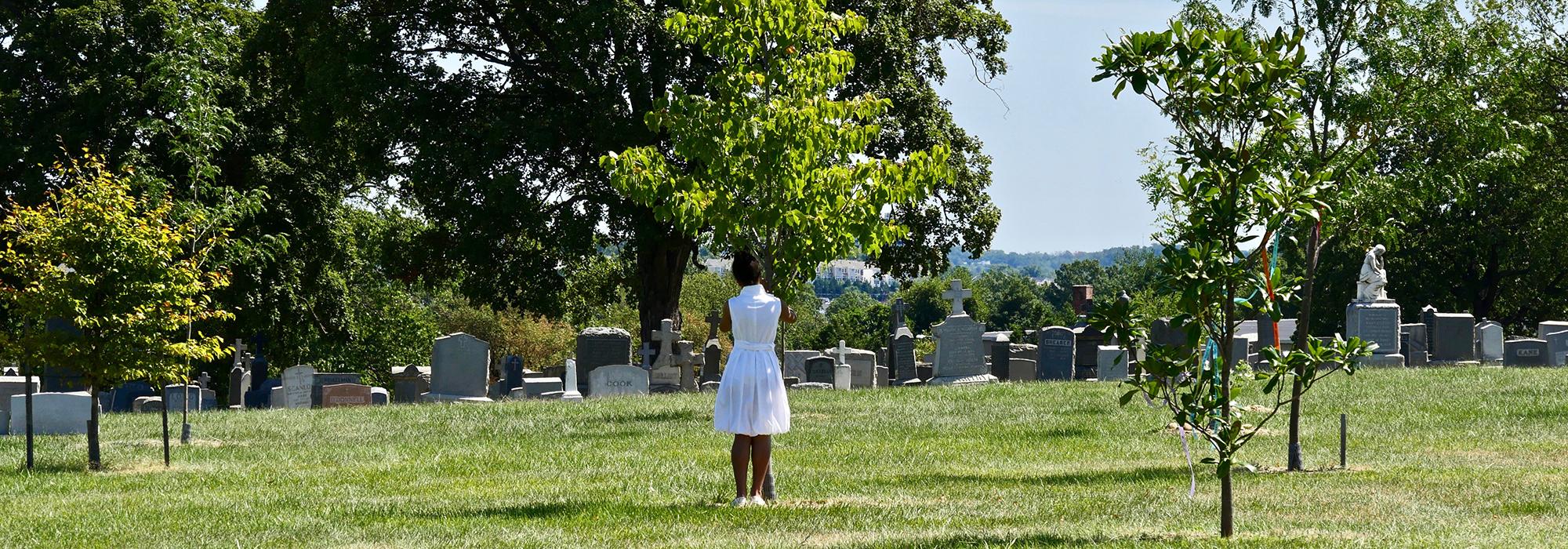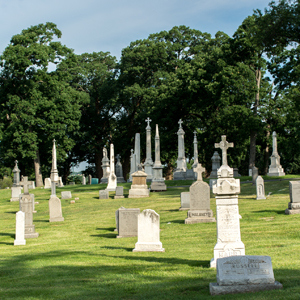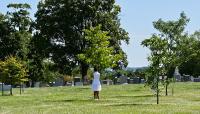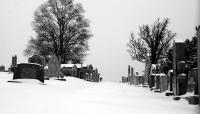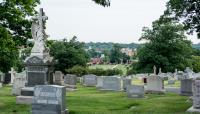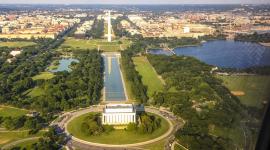Following an 1852 ordinance by the Washington, D.C., city council limiting the creation of new cemeteries within Georgetown, the Roman Catholic Archdiocese of Baltimore purchased 41-acres of Fenwick Farm for use as a burial ground in the northeast section of the District of Columbia. Mount Olivet, modeled after Boston’s Mount Auburn Cemetery and named after the Mount of Olives in Jerusalem, opened between 1858 and 1862 as a racially integrated cemetery. It is a rare example of a Civil War-era integrated cemetery still in operation in the capital. The cemetery began with 70 acres and has grown over the years with the addition of several acres in the northeast corner.
More than 100,000 graves are laid out across approximately 80 acres of gently rolling hillside opposite the National Arboretum. Circuitous paths meander up a wooded hilltop in the middle of the cemetery. Various species of oak tree, including scarlet and willow, as well as crepe myrtles, dot the grounds, while pine trees frame portions of the perimeter. Several circular plots, a feature emblematic of the rural cemetery movement, and nearby rows of Neoclassical mausolea are laid out north of the main entrance and its adjacent superintendent’s residence. Except for several plots where burials are placed at various setbacks from each other, grave markers are laid out in uniform rows. The rows vary in orientation throughout the cemetery, creating distinct sections and visual interest. Notably, a formal oval path intersected by linear internal paths is tucked away in the northeast corner. In 2018, the cemetery partnered with the Nature Conservatory to replace rarely used access roads with grass, trees, flowerbeds, and bio-retention cells to help mitigate polluted runoff. As part of this project, a commemorative garden created by landscape designer Gwen Wolfgang was installed in honor of the enslaved men and women who were buried in unmarked graves. The garden consists of new plantings, including yucca, which traditionally marked the graves of the enslaved.



